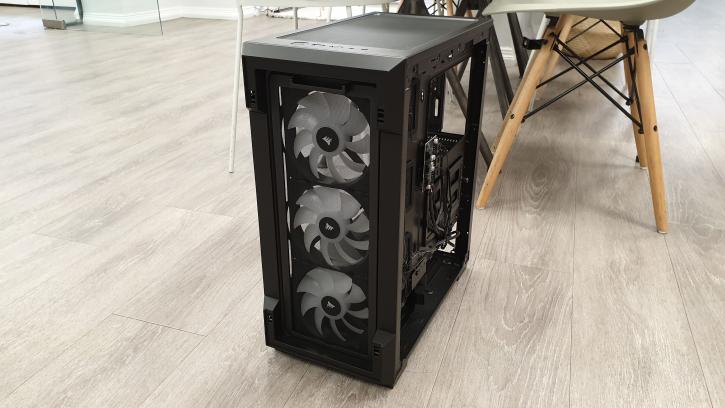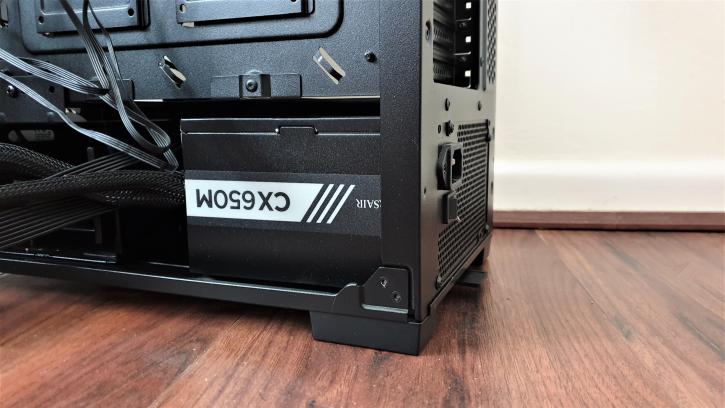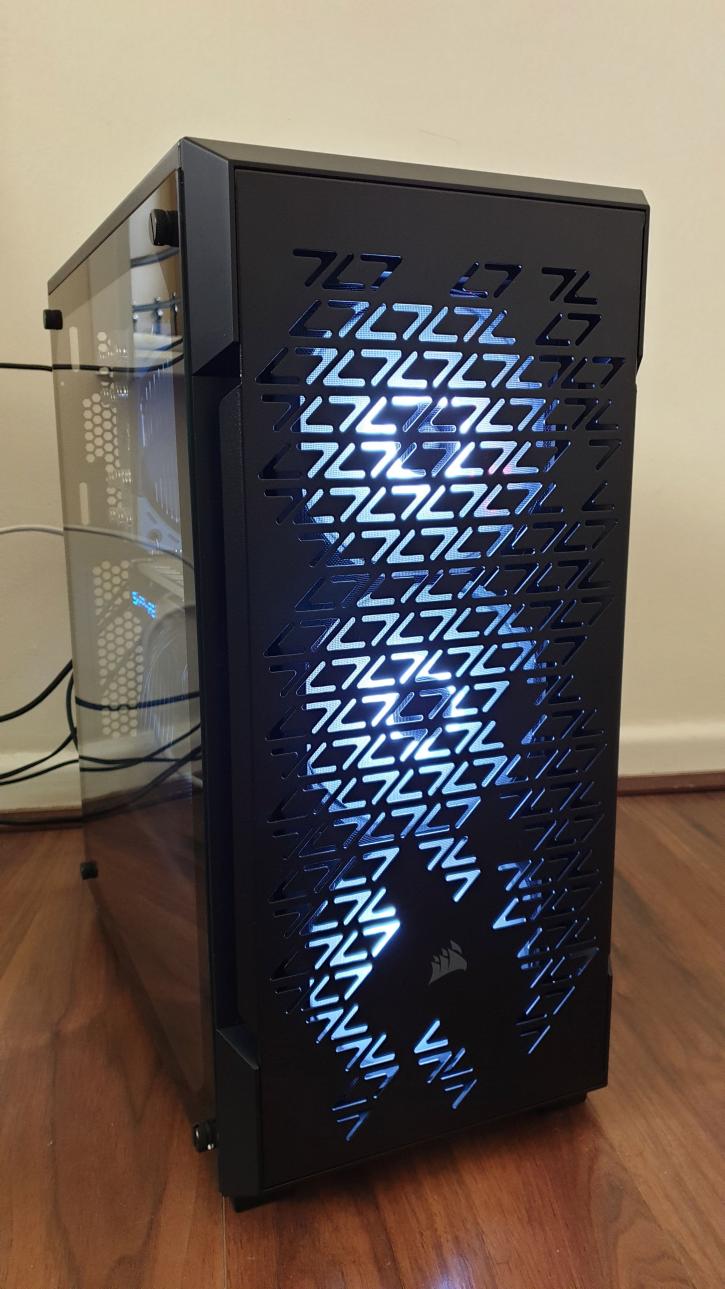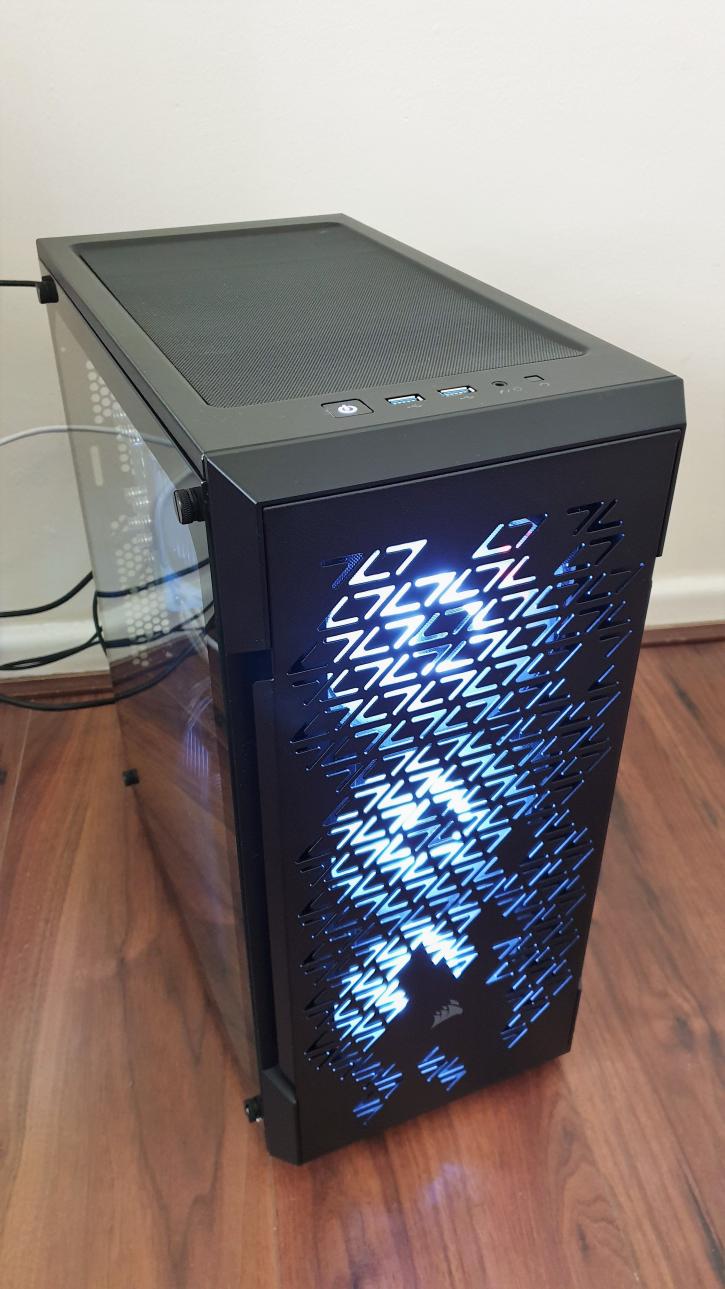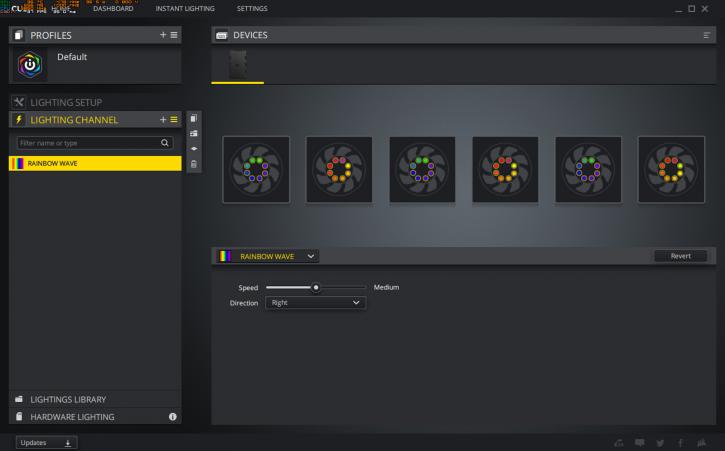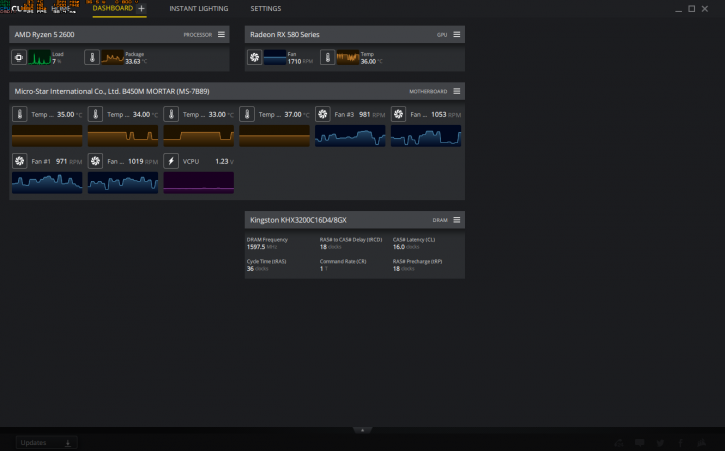The Build Process
In this section of the review, I will re-build my current PC (housed in a Phanteks P350X, a case with a very similar design philosophy to the one review today) inside the 220T. This is, really, the only true way to get a feel for what a case is like not only on the outside but also what it would be like as an owner of the product.
I have already been through some of this case's features and technical specifications. What, though, is the 220T like to live with? Well, for those that want a very top-level 'Too Long, Didn't Read' (i.e. TLDR), it's very good. In my view, in terms of overall ease of use, the 220T ranks up there amongst the best of 'higher' tier ATX mid-tower cases for below 100 GBP. I will, naturally, save my thoughts for the review's conclusion.
Rather than go through the build in a step-by-step process, I will highlight some of the more notable aspects of the experience, including any positives or negatives... though, actually, this is where I really start to struggle. The truth of the matter is that the build process in the 220T was entirely painless. Were there any problems I encountered? Actually, no, there weren't. I might imagine that cable management with a plethora of RGB components and drives might get difficult, given the overall lack of space behind the back panel. There are, however, a multitude of cable tie-down points, which is always welcome (not that special dispensation should be given for this, as I expect it in all modern cases). The build process in the 220T was, perhaps, one of the easiest I have ever gone through. I even welcomed the fact that the pre-installed standoffs weren't screwed down so tight that I couldn't remove them (due to some being in the wrong position for mATX boards, which is what I have).
I will, however, lament something on behalf of you AIO fans out there. Corsair has gone to a lot of trouble to promote the iCUE software and a fully integrated RGB ecosystem. That, in theory, is fine. There is, however, a problem, and it is to do with the case's size. Fitting a top-mounted radiator with anything beyond low-profile DIMMs just isn't going to happen, end of story. I was curious to see if any other reviewers had found the same, and - sure enough - the folks over at Tweaktown mentioned this very problem. Whilst I appreciate there are notable size limitations when trying to fit the ATX form factor into a mid-tower case that is so small, Corsair are potentially losing out on further sales of their RGB enabled liquid coolers. They list up to 360mm radiators as compatible on the 220T's product page but make no mention on the 'top mount' limitation on said page. In my view, this is not good and should be amended with a caveat.
What about iCUE? Readers of any of my previous reviews will note that I have a special dislike for additional software, especially those suites that are single-use. I have, however, made my peace with them by some new rationale that occurred to me as I was writing this review. If you are the kind of person that wants RGB in their system, then you probably won't mind having individual suites installed to achieve the effect you desire. If you're not a fan of the lighting craze... well, you don't need it, end of.
The 220T is still a very good chassis sans the RGB, after all! For those wondering, iCUE has changed quite a lot since its first iteration, and its feature set is actually very extensive. It sports integration with some of latest AAA titles, even, with such games like Metro: Exodus, The Division 2, and Far Cry 5/New Dawn. The software comes with a wide variety of pre-defined colour profiles, some of which are actually very appealing (e.g. the default, 'Rainbow Wave'). However, by far my favourite is the 'Rain' effect. It's bizarrely captivating, even hypnotic. Anyway. You can also choose other more generic colour modes, and I did eventually settle on static white (call me boring, go ahead, but I really don't want a discotheque in my room whenever my PC is on). Overall, I actually quite liked iCUE. It even has (pictured) a fairly rudimentary dashboard, used to monitor some basic parameters of your CPU, GPU, RAM, and mainboard.
Thermals & Noise
For those interested, I will include a small section on 'out of the box' thermals vs. my old P350X from Phanteks. The thermal testing was done using Unigine Heaven at 1080p, extreme settings, using 8x AA. Case fans in the P350X were the same SP120's used in the 220T, liberated temporarily and placed in a 2x frontal intake and 1x rear exhaust position. Case fans were left at 50% speed for the testing, using MSI's 'Commander' software to set the speeds. Note that the default P350X comes with just a single intake and exhaust. The 'from the factory' P350X would, likely, perform worse than seen here. Probably only marginally, but it is worth mentioning. Finally, the room the testing was conducted in was approximately 23 degrees.
In the P350X, the GPU heated to a maximum of 61C after 20m of stress testing, drawing an average of around 130W. In the 220T, after 20m, we see a maximum of 63C. Yes, a bit hotter, but really not by enough to warrant one over the other if that is what your choice comes down to. For the noise testing, fans were fixed at both 50% and 100%, and the noise measured using a meter sitting atop a desk approximately 50cm away from the top of the case. Results here were as I expected, given the 220T's semi-exposed front panel (i.e. where the noise producing components are located). With the fans at 50%, the noise settled at an average of 35 decibels. Just a touch louder than the Corsair 275R, but as that case has a largely shut off front panel (save for the sides), this isn't a surprise.
With the fans set to 100%, the SP120s run at c. 1400 RPM, +/- 10% or so. This resulted in a reading of 41 decibels. This isn't much of a surprise either, as the SP120's - whilst very effective fans - are not known for being especially quiet. The noise is relatively intrusive, it has to be said, so I would suggest using 75% or 50% if you plan to buy this case, and ensuring your case has effective exhaust. With that said and done, shall we move onto this review's conclusion?

